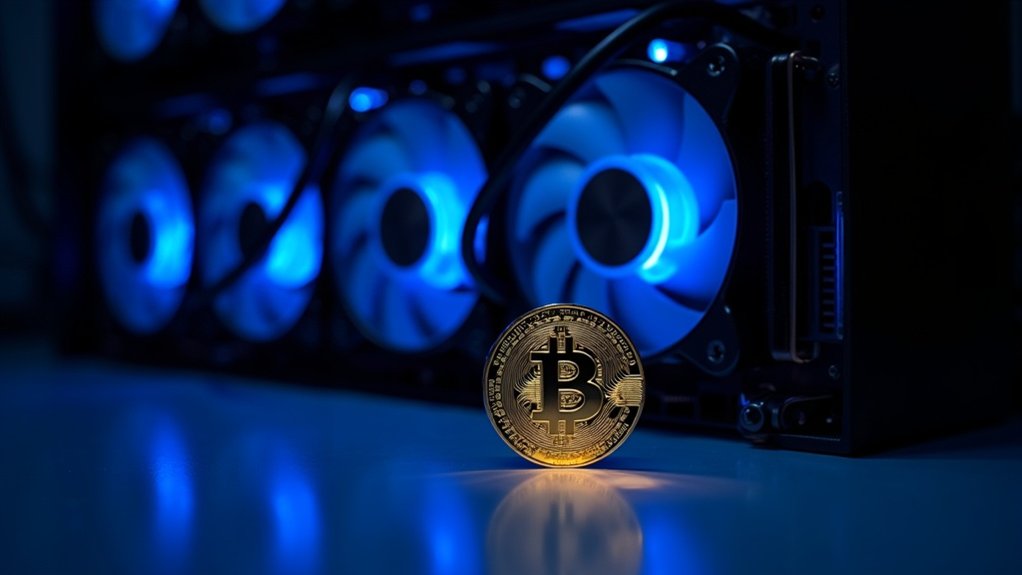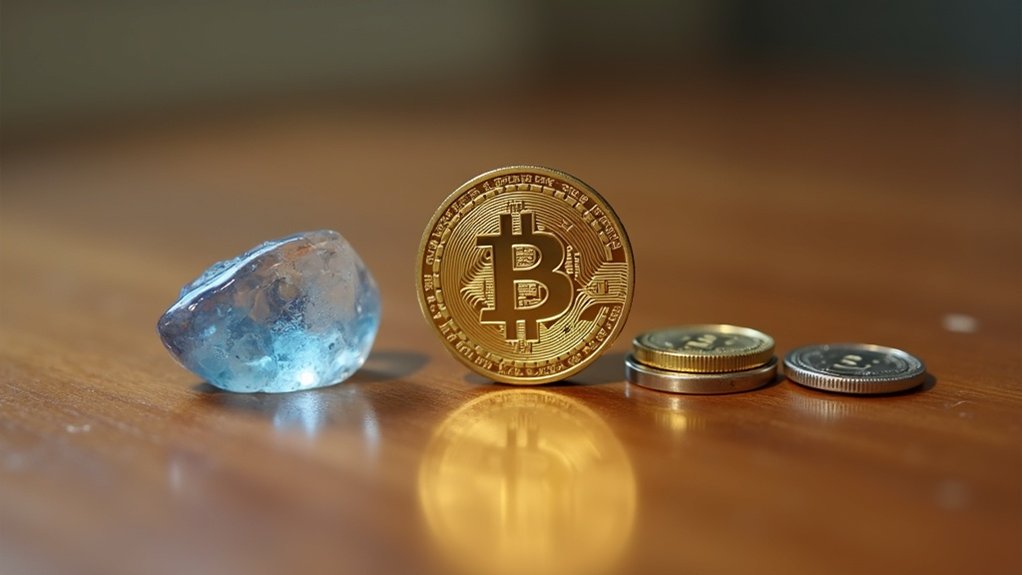ICP (Internet Computer Protocol) isn’t just another cryptocurrency. It’s a blockchain network aiming to completely revamp internet infrastructure. Created by DFINITY Foundation in 2015 and launched in 2021, ICP facilitates decentralized Web3 services without relying on AWS or Google Cloud. The token enables governance, rewards participants, and covers transaction fees. It uses Chain Key Cryptography for instant validation and supports multiple programming languages. The ambitious project could redefine what cryptocurrencies actually do.
While many cryptocurrencies focus on replacing money, ICP (Internet Computer Protocol) aims for something bigger—replacing the entire internet infrastructure. This native utility token powers the Internet Computer blockchain, a network designed to break away from centralized cloud giants like AWS and Google. The idea? Decentralized Web3 services with better speed and efficiency. No more relying on Big Tech’s servers. That’s the pitch, anyway.
ICP tokens serve multiple functions. They facilitate governance, reward participants, and pay for transaction fees. Holders can lock their tokens to vote on upgrades and changes to the protocol. The more you stake, the more say you get. Simple as that. The system also incentivizes good behavior and compensates for computational resources. Similar to a DAO structure, the protocol enables community-driven decision-making through token-based voting rights.
The tech behind ICP isn’t like your average blockchain. It uses Chain Key Cryptography for instant transaction validation across independent data centers worldwide. The network consists of subnets of nodes that process transactions and run smart contracts separately but communicate seamlessly. No need for clunky layer-2 solutions here—ICP scales by adding more subnets. Neat trick.
What makes ICP different? Speed, for one. Transactions finish quickly with near-instant finality. The platform can serve web experiences directly to users without traditional web servers. It also implements a reverse-gas model where smart contracts pay for their own computation. That’s a big deal for developers.
The Internet Computer aims to enable most global software to run as scalable smart contracts. It even supports deploying AI models as smart contracts—something other blockchains aren’t doing yet. Developers can build in a serverless environment with support for multiple programming languages including Rust, Motoko, and Python. The network self-upgrades through the Network Nervous System, an on-chain governance system that sounds straight out of sci-fi.
Developed by the DFINITY Foundation, which was founded by Dominic Williams in 2015, ICP represents an ambitious vision: not just a new cryptocurrency, but a complete reimagining of how the internet could work. The project officially launched in May 2021 after years of research and development. Whether it succeeds is another question entirely.
Frequently Asked Questions
How Does ICP Differ From Ethereum and Other Smart Contract Platforms?
ICP runs fully on-chain, unlike Ethereum where most dapps execute off-chain. Big difference.
Its canisters (smart contracts) operate autonomously and can self-manage, while Ethereum contracts just sit there waiting for transactions.
ICP processes 11,500 TPS with 1-second finality – Ethereum? Not even close.
The “reverse gas model” means users don’t pay fees directly.
Plus, ICP’s subnet architecture allows horizontal scaling, something Ethereum’s still dreaming about with sharding.
What Are the Risks of Investing in Internet Computer Protocol?
Investing in ICP comes with serious risks.
Extreme price volatility (from $497 to under $5) speaks for itself.
The competition is fierce – other blockchains want that decentralized web hosting pie too.
Technical complexity? Yeah, that’s a hurdle.
Regulatory uncertainty looms large, especially with those UN partnerships drawing attention.
Security concerns persist despite their fancy cross-chain integration.
And adoption? Still a big question mark.
The crypto market’s wild swings don’t help matters either.
How Does Icp’s Tokenomics Model Work?
ICP’s tokenomics operates on a dual mechanism.
First, the inflationary side: new tokens mint as rewards for governance stakers and node providers.
Second, the deflationary counterbalance: ICP gets burned when converted to cycles—the stable “fuel” that powers computation on the network.
Cycles are pegged to fiat, making costs predictable for developers.
This “reverse gas model” means users don’t need tokens to interact with dapps.
Pretty clever system, actually. Inflation meets deflation, theoretically.
Can Developers Migrate Existing Dapps to Internet Computer Protocol?
Yes, developers can migrate existing dApps to ICP, but it’s not plug-and-play simple.
They’ll need to reimplement backend logic using Motoko or Rust, adapt to IC’s unique state management, and reconnect frontends to canisters.
No magic “port” button exists. The process requires understanding IC’s actor model and asynchronous messaging.
Different architecture, different rules.
Some might find it worth the hassle for ICP’s scalability benefits. Others? They’ll take one look and run screaming.
What Security Measures Protect the Internet Computer Ecosystem?
The Internet Computer employs multiple layers of protection. Chain-key cryptography creates a constantly updating verification system.
Threshold cryptography distributes control, eliminating single points of failure. No passwords here—Internet Identity uses cryptographic passkeys instead.
The Network Nervous System (NNS) enables decentralized governance through community voting. End-to-end encryption secures all data transfers. Pretty impressive, actually.
Third-party security audits from firms like BlockApex catch vulnerabilities before they become problems. Solid setup.









